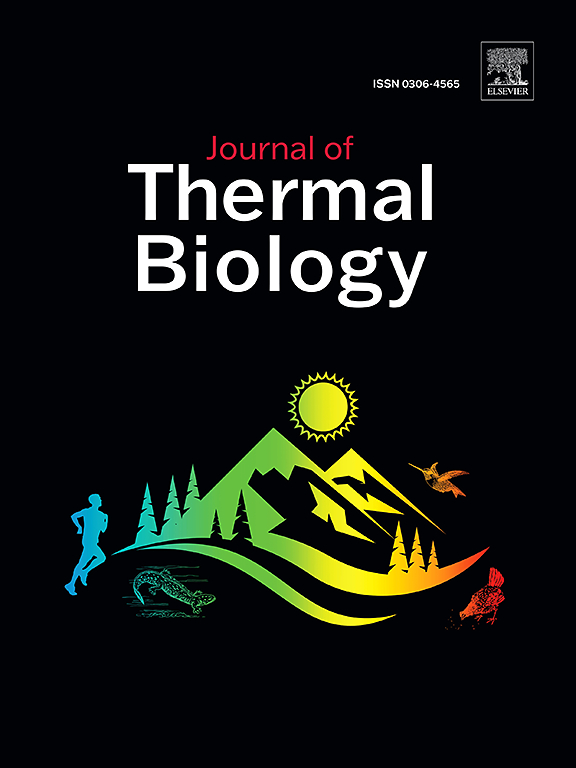Single and combined effects of environmental heat stress and physical exercise on thermoregulation, executive function, and cerebral oxygenation
IF 2.9
2区 生物学
Q2 BIOLOGY
引用次数: 0
Abstract
This study investigated the single and combined effects of environmental heat stress and physical exercise on executive function (EF) performance, prefrontal cortex oxygenation, thermoregulatory responses and subjective perceptions. Sixteen subjects participated in four experimental sessions: two under moderate environmental conditions (23 °C), with and without physical exercise (R23, E23), and two under hot environmental conditions (35 °C), with and without physical exercise (R35, E35). In each session, participants completed EF tasks before and after 1 h of passive rest or 45 min of moderate-intensity cycling followed by 15 min of rest. We used Δresponse time (ΔRT) and Δaccuracy (ΔACC) of EF tasks to demonstrate changes from pre to post experiment. Additionally, changes in cerebral oxygenation during EF tasks were illustrated using the Δoxygenation difference. Heat stress alone increased core temperature (Tcore), mean skin temperature (Tskin), heart rate (HR), thermal sensation (TS), and rating of perceived exertion (RPE). Exercise in a hot environment further increased physiological indicators and RPE, but TS exhibited a different pattern, with lower TS in R35 compared to E35 during the second battery of executive function tests. Moreover, heat stress alone increased ΔRT for the More-Odd Shifting task and the Stroop task under incongruent conditions, while decreasing the Δoxygenation difference during the More-Odd Shifting task. ΔRT for the 2-back, More-Odd Shifting and Stroop tasks under incongruent conditions were lower in the E35 trial than in the R35 trial, whereas the Δoxygenation difference was higher in the E35 trial compared to the R35 trial. These findings indicate that environmental heat stress alone increases Tcore and Tskin, alters TS, and impairs EF performance by decreasing prefrontal cortex oxygenation. A 45-min moderate-intensity exercise combined with environmental heat stress enhances the increases in body temperatures but mitigates the detrimental effects of heat stress alone on EF performance by increasing prefrontal cortex oxygenation.
求助全文
约1分钟内获得全文
求助全文
来源期刊

Journal of thermal biology
生物-动物学
CiteScore
5.30
自引率
7.40%
发文量
196
审稿时长
14.5 weeks
期刊介绍:
The Journal of Thermal Biology publishes articles that advance our knowledge on the ways and mechanisms through which temperature affects man and animals. This includes studies of their responses to these effects and on the ecological consequences. Directly relevant to this theme are:
• The mechanisms of thermal limitation, heat and cold injury, and the resistance of organisms to extremes of temperature
• The mechanisms involved in acclimation, acclimatization and evolutionary adaptation to temperature
• Mechanisms underlying the patterns of hibernation, torpor, dormancy, aestivation and diapause
• Effects of temperature on reproduction and development, growth, ageing and life-span
• Studies on modelling heat transfer between organisms and their environment
• The contributions of temperature to effects of climate change on animal species and man
• Studies of conservation biology and physiology related to temperature
• Behavioural and physiological regulation of body temperature including its pathophysiology and fever
• Medical applications of hypo- and hyperthermia
Article types:
• Original articles
• Review articles
 求助内容:
求助内容: 应助结果提醒方式:
应助结果提醒方式:


